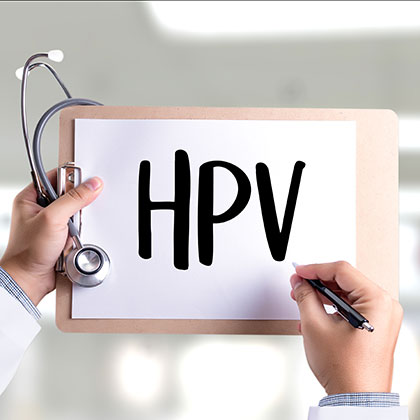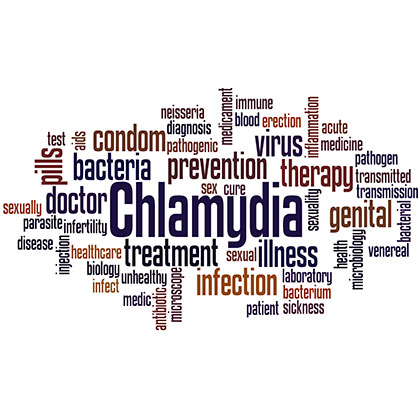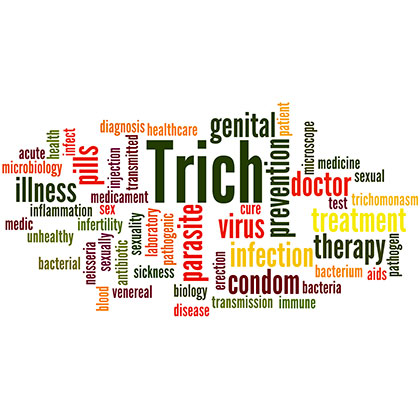Warts are small non-cancerous skin growths that can appear anywhere, but mostly on the fingers, hands and arms. Verrucas are also warts that appear the bottom of your feet, called plantar warts (verrucae plantaris). Most are harmless and can go away without any treatment, though it can take years for them to disappear.
Most people have one or more warts at some point in their lives. They’re very common, affecting about one in 10 people in the UK (i). Warts are more common in children – though anyone of any age can be affected – and there’s some evidence that up to 30 per cent of children and young adults may have them (ii). As well as children and young adults, people with weakened immune systems also have a higher risk of developing warts.
Warts
Usually raised lumps that are often round or oval in shape, warts have a bumpy surface and can be anything from 1mm to more than 1cm in diameter. You may have just one or two warts in the same area, or several. Some warts can also be flat (plane warts) or thin and finger-like (filiform warts). Perigunal warts are warts that develop around the nails, and groups or clusters of warts are referred to as mosaic warts.
Verrucas
These are the same as warts, but because they develop on the soles of your feet they tend to be flat rather than raised. They’re also usually white in colour, often with a black dot in the middle. And while they too are usually harmless, they can be painful if they develop on weight-bearing parts of the soles, such as the heels or balls of your feet.
What causes them?
Warts and verrucas are caused by certain strains of the human papilloma virus (HPV). While there are more than a hundred strains of HPV, types 1, 2, 3, 4, 10, 27 and 57 are thought to be the types that most commonly cause warts and verrucas (ii).
You can become infected with HPV if you come into contact with someone else who has it, either via skin-to-skin contact or by touching personal items such as their towels, flannels, shoes or socks. You can also become infected if you have contact with contaminated floors or other surfaces in places such as gyms, communal showers, areas around swimming pools or communal changing rooms.
If you become infected, cells in the affected area of skin called keratinocytes start to produce an excess amount of keratin in the top layer of skin, resulting in a thick, hard lump. If you then scratch the lump, the virus can spread to other parts of your body, causing more warts or verrucas. Experts believe you’re more likely to be infected by the HPV virus if your skin is wet or damaged(iii). However, the infection doesn’t usually show up straight away, and it can take weeks or even months for a wart or verruca to develop.
Should you get professional help?
Most warts and verrucas are harmless and eventually disappear without any medical intervention. But there are some reasons why you may need your GP’s help with them. If you’ve tried getting rid of them with over-the-counter treatments (see below) but they keep coming back or spreading, if they’re painful or they change shape or colour, or if the position of a wart or verruca means they are interfering with your work or activities, it’s advisable to get professional medical help.
People who have weakened immune systems – those with HIV/AIDS, for instance, or people taking immune-suppressing drugs – should also speak to their GPs about warts or verrucas. You may also want to see your GP if you’re not sure a growth anywhere on your body is actually a wart (it could be a mole, for example).
Treatments for warts and verrucas
Warts are more likely to disappear faster in children than in adults. Many children find their warts clear up within a year or two without any treatment. Warts in adults, however, can last longer (iii).
If you don’t want to wait for a wart or verruca to clear up by itself – or if you’re embarrassed about the appearance of a wart or find it painful or uncomfortable – there are treatments you can buy over the counter at pharmacies designed to get rid of them.
Salicylic acid
Found in a variety of products including creams, lotions, gels, skin paints and medicated plasters, salicylic acid helps get rid of warts and verrucas by burning off the top layer of the affected skin. These products usually have to be applied daily for anything up to three months, so they’re not an overnight fix.
Whether or not a salicylic acid product works for you will partly depend on how much you persevere with it. According to experts if you apply a salicylic acid product exactly according to the instructions on the packet, you have a reasonable chance of getting rid of your wart within three months (though the evidence for this is variable) (iii).
However, never use a salicylic acid product on a facial wart, as it may result in skin irritation and possible scarring. People with circulation problems or diabetes should also only use salicylic acid if their GP has advised them to do so.
Freezing
Treatments that freeze warts are also available over the counter. These contain the freezing agent dimethyl ether propane, which is considered safe for home use. Some GPs and practice nurses also freeze warts, but health professionals may use liquid nitrogen instead of dimethyl ether propane. Both agents destroy wart tissue by freezing the affected area of skin, which disrupts the cell membranes. When the skin thaws, the cells die, which destroys the wart.
In some cases, combining salicylic acid products with freezing treatments may be recommended.
However, as with salicylic acid, freezing therapies don’t usually work straight away, and you may need up to six treatments, usually a couple of weeks apart. Freezing is also a lot more expensive than salicylic acid, and studies haven’t clearly shown that it’s any more effective. This explains why some GPs’ practices no longer offer it as a treatment for their patients.
Freezing also carries a small risk of scarring or damaging underlying tissues such as tendons or nerves. It may not be suitable for certain people too, including younger children and people with circulation problems.
Laser therapy, microwave therapy, curettage (where the wart tissues are scraped off), verucca needling (which involves puncturing the verucca with a needle to cause bleeding) and more specialist creams may be used on warts and verrucas that haven’t responded to salicylic acid or freezing therapies. However, such treatments are only usually available privately.
Other types of warts
Other types of warts include genital warts and seborrheic warts – though strictly speaking the latter are not genuine warts, as they aren’t caused by a virus.
Genital warts
With around one in 10 sexually active people developing genital warts at some point in their life (iv), these are the second most common type of sexually transmitted infection (STI) in England (the most common is chlamydia) (v). Like common warts and veruccas, genital warts are caused by HPV. Most are caused by HPV type 6 or 11 rather than the strains that cause common warts (vi).
Genital warts appear on or around the genital or anal area, and are spread during skin-to-skin sexual contact – not just by penetrative sexual intercourse – as well as by sharing sex toys. It can take some time for the warts to develop after an initial HPV infection (months or years even), and some people have the virus but don’t develop any warts. This means you can be a HPV carrier without knowing it, and you could pass the virus on to others who may go on to develop warts.
Genital warts are mostly painless, though some can cause irritation and soreness. Some people, however, may find them distressing and embarrassing. If you have genital warts you could have another STI too, and you may be advised to have tests and treatment at a sexual health or genitourinary medicine (GUM) clinic.
Women with genital warts are also advised not to put off having their usual cervical screening tests. While HPV types 6 and 11 aren’t linked with cancer, other HPV types are (most cases of cervical cancer are caused by HPV infection (vii)).
The good news is that most genital warts disappear in time without any treatment (around a third clear up within six months (viii)). You can, however, have them treated with creams that burn or destroy the wart tissue, by having them frozen off, by having them surgically removed or by having them destroyed with a laser. Learn more: Genital warts explained: causes, treatment and support
Seborrhoeic warts
Also called seborrhoeic keratoses, these often affect your skin as you get older (they usually start to appear after you turn 40 (ix)). They are typically round or oval in shape, and can vary in colour (most are dark brown or black). Seborrheic warts are non-cancerous and often look like crusty or greasy dark spots (usually dark brown or black). They can vary in size, from a centimetre to several centimetres in diameter.
Nobody knows why they appear, but seborrhoeic warts are known to sometimes run in families. However, because they aren’t caused by a virus, they’re not infectious. They can, however, make you feel self-conscious, especially if they appear on your face.
Warts and verrucas: how to help yourself
Because warts and verrucas are contagious, there are a few things you can do to avoid becoming infected with the virus that causes them, as well as to prevent passing an existing infection to others.
-
Don’t share towels, flannels, shoes, socks or other items of clothing with someone who has a wart or verruca. Also try to avoid touching another person’s warts or verrucas.
-
If you’ve been using shared equipment – such as exercise machines in the gym, for example – wash your hands when you’ve finished. Try not to go barefoot in public or communal places to avoid picking up a verruca (wear flip flops or pool shoes in the areas around swimming pools). If you already have a verruca, it’s also important to wear something on your feet or to cover the verruca with a waterproof plaster when using public or communal facilities.
-
Try not to bite your nails, as broken skin is more likely to become infected with HPV. Keep your feet and hands dry whenever possible too, as wet skin is thought to be more susceptible to HPV infection.
-
If you already have one or more warts or verrucas, try not to touch them or pick at them, as this could help spread the virus to other parts of your body. If you do have to touch your own wart or verruca, wash your hands thoroughly afterwards.
-
If you use an emery board or pumice stone to file down the surface of a wart or verruca (when treating them with salicylic acid, for example, or using the duct tape method – see below), don’t use the same items on healthy skin and nails as it could help transfer the virus.
-
Use an electric razor if you need to shave areas that have warts (if you cut a wart, it can spread the virus).
Does duct tape work?
There is conflicting evidence surrounding the use of duct tape as a treatment for warts. However, the BBC2 programme Trust Me, I’m a Doctor put this method to the test, and found the majority of volunteers said their warts had become 25 per cent smaller on average after covering them with duct tape for 28 days (x).
To try it yourself, simply cut a piece of duct tape that’s the same size as your wart. Apply the patch of tape and leave it on for six days (replace with a fresh piece if it falls off). On day seven, remove the tape and soak the affected area of skin in warm water. While the skin is still soft, use an emery board or pumice stone to file off the dead skin. Apply a new patch of duct tape the following day and repeat the entire process three more times.
What else can you do?
Rubbing raw garlic or applying the oil from garlic capsules onto warts or verrucas may be useful, since garlic is thought to have anti-viral properties. Indeed, one study suggests using a fat-soluble garlic extract twice daily may help remove warts after just a couple of weeks of treatment (xi).
Tea tree oil is also thought to be antiviral, and many natural health practitioners advise using neat tea tree oil on warts (put a drop of oil on the wart and cover with a plaster).
Taking certain nutritional supplements may also be helpful. For instance, some natural health practitioners believe your body may need more vitamin C when challenged with a viral infection. Vitamin E may also help with tissue repair if taken internally – though you could also try applying the oil from a vitamin E capsule on a wart or verruca.
Having a wart or verruca can be uncomfortable but it is nothing to be embarrassed about. They are easily treatable with natural, over the counter or medical interventions. Find out about more treatments for common health conditions by reading the articles in our health library.
References:
-
Available online: https://patient.info/skin-conditions/warts-and-verrucas-leaflet
-
Sterling JC. et al., British Association of Dermatologists ‘ guidelines for the management of cutaneous warts(2014). British Journal of Dermatology. 2014 July.Available online: http://www.bad.org.uk/library-media/documents/Warts_2014.pdf
-
Available online: https://patient.info/skin-conditions/warts-and-verrucas-leaflet
-
Available online: https://patient.info/sexual-health/sexually-transmitted-infections-leaflet/anogenital-warts#nav-2
-
Available online: https://www.nhsinform.scot/illnesses-and-conditions/sexual-and-reproductive/genital-warts
-
Available online: https://www.tht.org.uk/hiv-and-sexual-health/sexual-health/stis/genital-warts-and-hpv
-
Available online: https://www.nhs.uk/conditions/cervical-cancer/causes/
-
Available online: https://patient.info/skin-conditions/warts-and-verrucas-leaflet/seborrhoeic-warts
-
Available online: https://www.bbc.co.uk/programmes/articles/268LVV4GPq49nyWzgw94yR/how-should-i-get-rid-of-a-verruca-or-wart
-
Deghani. F, et al. Healing effect of garlic extract on warts and corns. Int J Dermatol. 2005 Jul;44(7):612-5. Available online: https://onlinelibrary.wiley.com/doi/abs/10.1111/j.1365-4632.2004.02348.x
Related Posts
Disclaimer: The information presented by Nature's Best is for informational purposes only. It is based on scientific studies (human, animal, or in vitro), clinical experience, or traditional usage as cited in each article. The results reported may not necessarily occur in all individuals. Self-treatment is not recommended for life-threatening conditions that require medical treatment under a doctor's care. For many of the conditions discussed, treatment with prescription or over the counter medication is also available. Consult your doctor, practitioner, and/or pharmacist for any health problem and before using any supplements or before making any changes in prescribed medications.

Christine
Christine Morgan has been a freelance health and wellbeing journalist for almost 20 years, having written for numerous publications including the Daily Mirror, S Magazine, Top Sante, Healthy, Woman & Home, Zest, Allergy, Healthy Times and Pregnancy & Birth; she has also edited several titles such as Women’ Health, Shine’s Real Health & Beauty and All About Health.
View More



